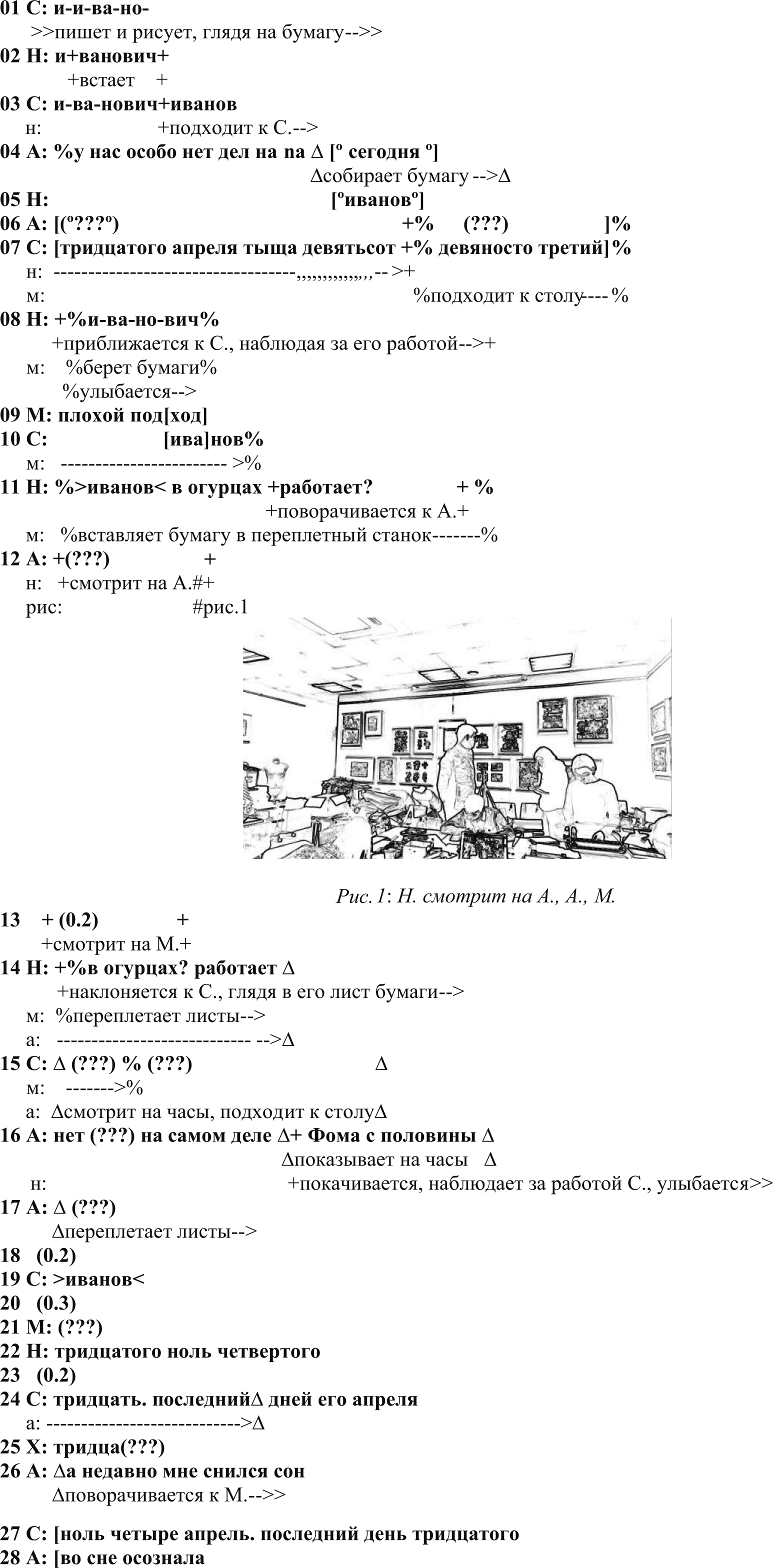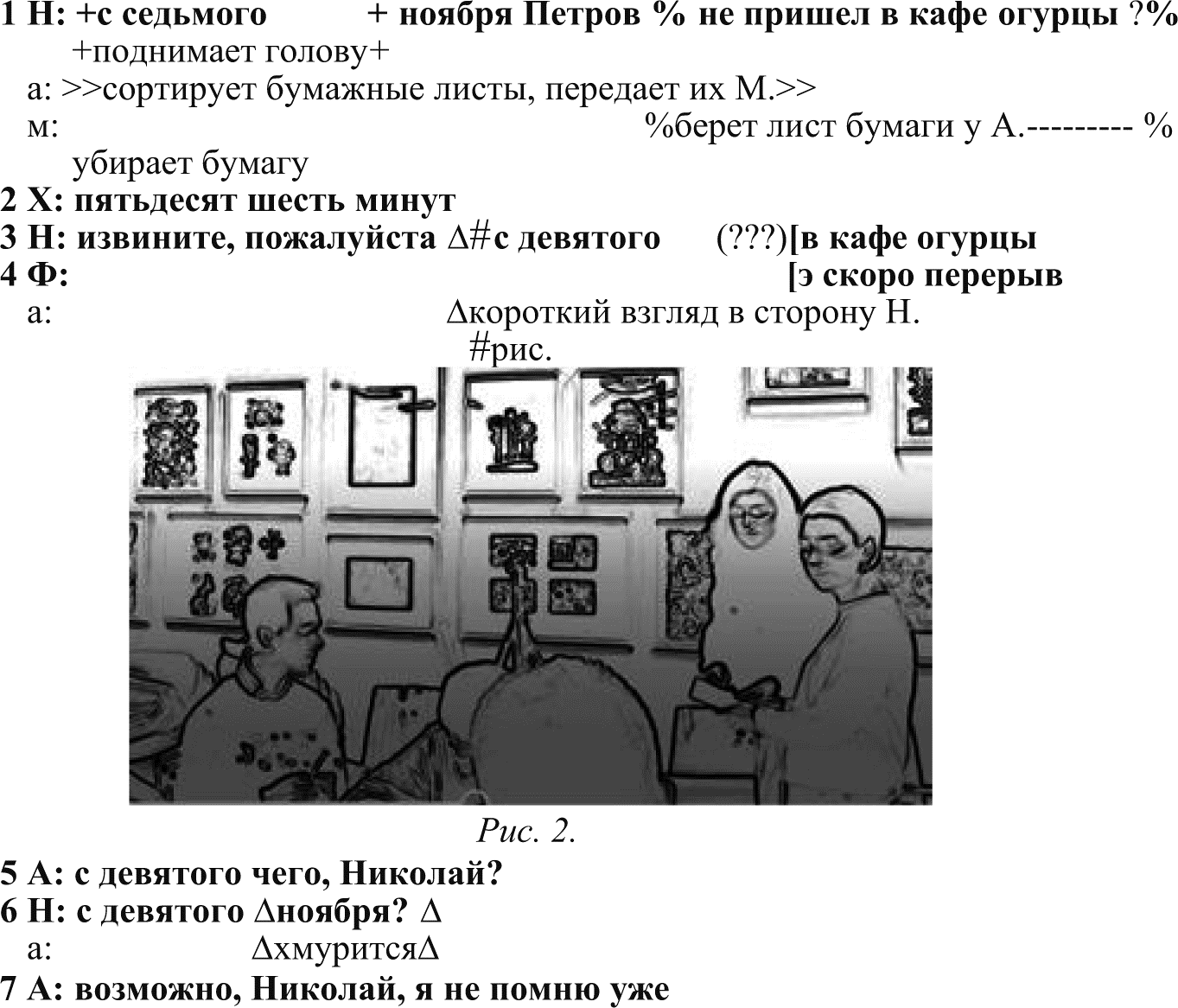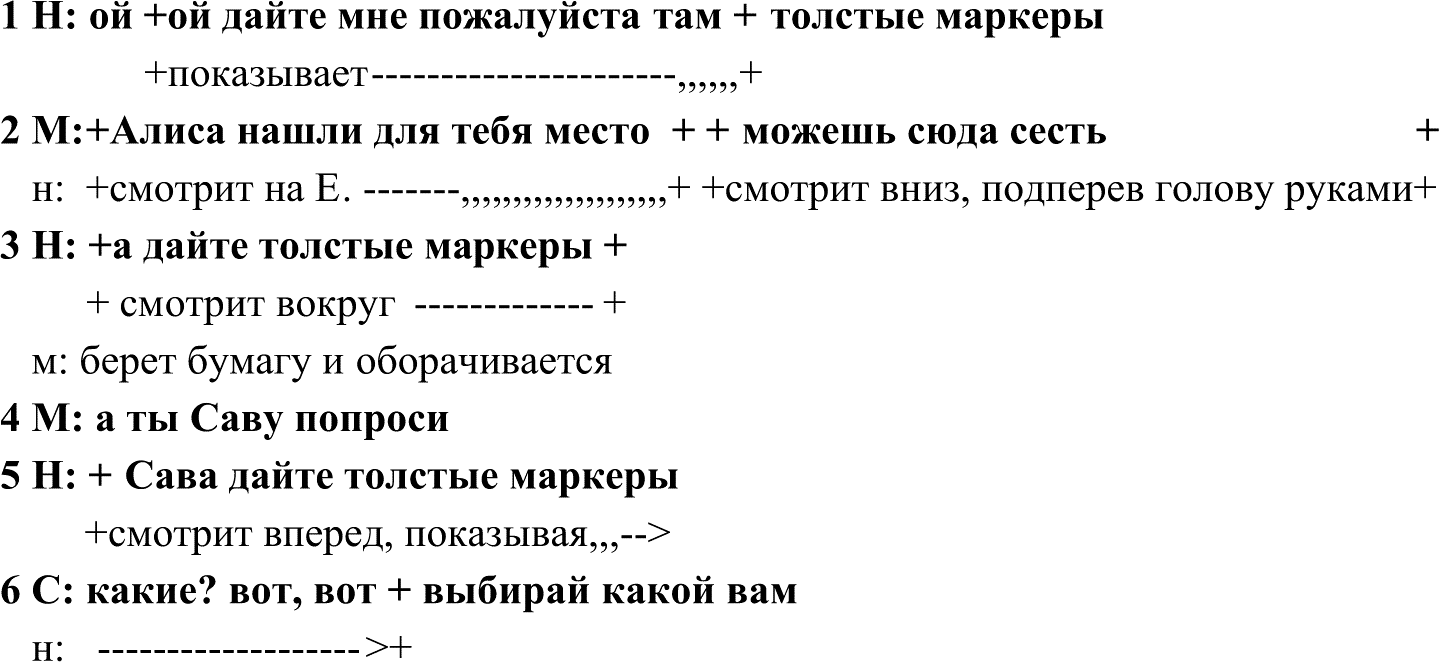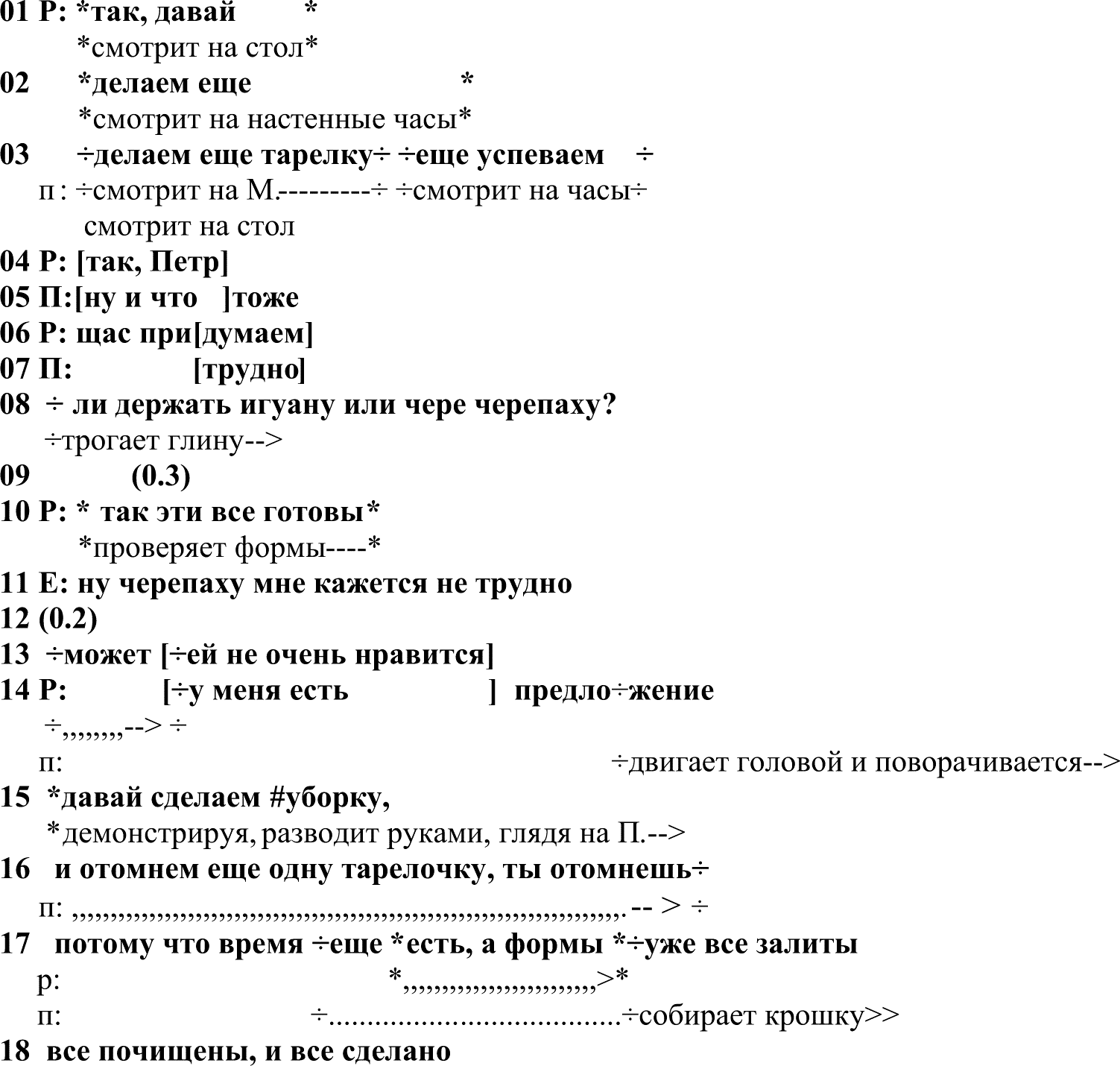Introduction
Work opportunities for most people with mental disabilities in Russia are rather limited. Life trajectories of some of them often include isolation in special care institutions. Others have never been diagnosed, struggling with communication and sometimes considered strange (including those with ASD who develop ways to “camouflage” their autistic traits [Hull, 2017]). However, with ideologies shifting and public awareness raising, the situation around workplace inclusivity is starting to change. One of the current options is offered by the so called “inclusive workshops for people with mental peculiarities”, where neurodivergent employees (including those with ASD) make furniture and pottery, design, cook or sew, getting a regular pay. The official website of the workplace where I collected data for the study provides ideologies behind such projects: “workshops, where an adult with mental peculiarities can get a job and live normally”, “we created inclusive workshops to make sure everyone is equal”.
Few publications have focused on social and organisational aspects of employment opportunities for neurodivergent people (see, for ex., [Antonova, 2021; Golovina, 2021; Nicholas, 2020]). Though inclusivity in the working environment draws researchers’ interest, most studies are based on questionnaires and interviews [Antonova, 2021; Golovina, 2021; Nicholas, 2020]. These mention some positive effects on the work process, for example, an HR-manager points out that involving employees with autism made the team more “disciplined” and “responsible” [Antonova, 2021, p. 381]. The idea of considering many factors in a model of ecosystem [Nicholas, 2020, p. 9] as well overlooks interaction at the microlevel, though highlighting the importance of soft skills [Nicholas, 2020, p. 7]. Face-to-face interaction in the workplace seems to be unfairly understudied. One of the possible explanations lies in perceiving the fact of employment itself as a success not only by ordinary people [Nicholas, 2020, p. 6], but by researchers as well. Thorough analysis of what is happening in the existing work environments can help to understand their problems, suggesting ideas for improvement.
There is a substantial gap in research into neurodiverse interaction in the workplace based on naturally occurring data. Addressing the gap, the study aims to investigate interactional challenges of an inclusive workplace through analysing video recordings. The article discusses dialogues involving neurodiverse participants, revealing the interactional and social reasons behind missing a response and what is done after the disruption.
Conversation Analysis of Neurodiverse Interaction
People with disorders are often blamed for communication failures. In line with lay stereotypes, most research has focused on the speech of neurodivergent people in experiments and tests (see, for ex., publications in clinical linguistics [Cummings, 2012]). As a result, communication disruptions are attributed to what is called cognitive or pragmatic impairment.
An alternative approach has developed in the field of conversation analysis. Within the approach, analysis of video or audio recordings includes verbal and embodied actions by all participants, in this case both autistic and neurotypical (see, for ex., [Maynard, 2020]), and focuses on the functions of actions, including those stereotypically associated with autism, like echolalia and set expressions [Dobbinson, 2003; Local, 1995]. Studies within conversation analysis have revealed the role of neurotypical individuals in making the interaction “atypical” [Walton, 2020]. Enriching conversation analysis with anthropological approach enables to connect features of autistic communication with cultural and social constraints [Ochs, 2004].
Within conversation analysis, the basic units building up any talk are turns which participants take in it, and adjacency pairs. In an adjacency pair, like a question and an answer, a first pair part “makes relevant a limited set of possible second pair parts” [Schegloff, 2007, p. 16]. As E. Schegloff puts it, “if such a second pair part is not produced next, its non-occurrence is as much an event as its occurrence would have been” and “we can then speak of it as a “noticeable absence” or an “official absence” or a “relevant absence” [21, 20]. Missing second pair parts violates the fundamental sequence organisation principle and disrupts coherence. Getting no response to your first pair part can frame your contribution as somehow irrelevant and, on the emotional level, make you feel ignored or unappreciated.
Conversation analysis has been used as a method for assessing social communication involving people with ASD. For instance, [Yu, 2023] describes a case, when conversation analysis helped parents “to become more attuned to the influences of the family’s interactional dynamics” on their child’s communication, benefitting from his echolalic communication and “embracing the idea of building interactions around his preferred scripts” [Yu, 2023, p. 38] (to see a more detailed guideline of how conversation analysis research can be used by speech therapists, see [Muskett, 2017]).
This approach can be related to Damian Milton’s “double-empathy problem”, which states explicitly that misunderstanding is not located in the autistic mind [Milton, 2012]. It is argued that communication between two speakers of different neurotypes is troubled by “a disjuncture in reciprocity between two differently disposed social actors” [Milton, 2012, p. 884], “who hold different norms and expectations of each other” [Milton, 2018, p. 1]. The model of “double-empathy problem” and conversation analysis enable to view interaction from the neurodiverse perspective [Williams, 2021].
Methods and Ethics
The whole dataset for the study comprises 20 hours of videos recorded in “inclusive workshops for people with mental peculiarities” in St. Petersburg, Russia. I visited the organization as a volunteer for about 2 months in January and February of 2020, attending the pottery and the graphic workshops regularly. Episodes containing communication disruptions were extracted from the recordings for further multimodal analysis. The collection of missing responses to questions and requests or directives contains 12 cases. The main method of approaching data is conversation analysis, enriched by the multimodal transcription system developed by L. Mondada [Mondada, 2016]. This was backed up with ethnographic methods: participant observation, interviews, and keeping a diary. The chosen qualitative approach allows to note details in neurodiverse interaction overlooked by other methods. Its main limitation resides in the justification of broader conclusions based on a limited collection of cases.
As I was told by the organisation’s director, all employees sign a paper allowing their photo taking and video shooting. Besides that, each time I asked all those present for the consent before turning my phone camera on. As for the goals of video shooting, I explained that it was done “for the purpose of science” and that I was planning to watch and analyse the recordings as a linguist.
In general, participants, including instructors and volunteers, are not informed about employees’ health conditions, with a few exceptions. The article analyses 4 extracts, involving 3 main adult participants diagnosed with ASD: their diagnoses were explicitly announced for the public in the official publications of the organization. Names were changed.
Transcription System
The transcription below follows the main principles of conversation analysis and the system developed by L. Mondada, where descriptions of embodied actions are marked by two identical symbols (one symbol per participant) which are synchronized with the stretches of talk [Mondada, 2016].
The following symbols are used in this article:
++ descriptions of N’s embodied actions
%% descriptions of M’s embodied actions
DD descriptions of A’s embodied actions
** descriptions of R’s embodied actions
÷ ÷ descriptions of P’s embodied actions
*---> The action described continues across subsequent lines until the same symbol is reached.
>> The action described begins before the excerpt’s beginning.
--->> The action described continues after the excerpt’s end.
..... Action’s preparation.
---Action’s apex is reached and maintained
,,,,, Action’s retraction
The following traditional conversation analytical symbols are used below:
ºivanovº Quieter than surrounding talk
>ivanov< Slower than surrounding talk [ ] Overlapping utterances
(0.2) Timed silences in tenths of a second
. Falling ending intonation contour
? Rising questioning intonation contour (???) Illegible speech sounds
Speech lines are given in bald and numbered. The translation is hyphenated (for more details see [Schegloff, 2007]).
Cases 1—3 were extracted from a video recorded in a graphic workshop and each involves missing second pair parts to either a question or a directive of the same neurodivergent participant N. The analysis of case 1 contains some reflecting on other challenging issues provoked by data. In case 4 a neurotypical instructor, trying to get an a neurodivergent employee P. to accomplish a task, gets no responses to some of her directives and misses an answer to P.’s question.
Results and discussion
Case 1
The episode below has four main participants, two of which are neurodivergent employees, N. and S. (ASD), and two instructors. N. and S. work as artists in the graphic workshop, creating designs for calendars, notebooks, mugs, and other products. They got to know each other in the workshop and became close friends. The young men often enjoy their interactional patterns for two, modelling popular TV quiz shows or playing numbers, when they take turns saying dates in order, for example, dates of birth or of opening metro stations. In the video, N. and S. are in the middle of fulfilling the work project: they are assigned to draw all participants of the workshops, including employees, volunteers, and instructors.
Case 1

There are at least three other people present in the room at the moment, two of which are other employees (they can be seen in figure 1, on the left and on the right) and a volunteer, the author of the paper. F., who is being discussed, has just left the room. At least one other person enters the room during this interaction episode. Besides the four main interlocutors, one more voice is heard (X).
In order to fulfil their task of sketching all the people involved in the organisation, N. and S. are using photographs taken in the workshops. N. sometimes asks for extra information, like a person’s date of birth, how long he has been involved in the workshop or if he was present in the workplace on some day. N. and S. are pronouncing the middle name Ivanovich of a person (lines 1—3), and then his last name Ivanov (3, 5, 10, 11).
Meanwhile, M. and A. are discussing work organisation (6, 9, 12, 15, 16). A particular matter of concern for them is how long F. has been in the workshop today and what he has accomplished. From the instructors’ perspective, the young man is often reluctant to work hard and prefers relaxing. As it appears to them, he has not done anything during the first half of the day. Reluctance to be engaged can be observed in any workplace, but here there are hardly any instruments to get employees work if they do not want to. This is one of the challenges instructors have not been prepared for, since the main ideology is providing needed jobs for those who otherwise would be much less involved socially. It is important to point out that some neurodivergent people may be regarded as “lazy” from a neurotypical perspective due to misunderstanding their experience (it might be harder for them to accomplish a seemingly easy task).
In line 11 N. is asking whether Ivanov works for the inclusive café “Cucumbers”, which is also a part of the organisation, but is situated in a different building. N.’s hearable question is not followed by an answer, and we will consider why. The first ground for the “event” in this case is multiactivity. When N. is asking his question, which is pronounced with the same loudness, A. and M. are busy with their manual work, looking at what they are doing. A. is putting paper sheets together, and M. is making holes in paper. They cannot see N.’s gaze, but they must be hearing his voice. Managing multiactivity and prioritising the main aspects of an inclusive workshop, which are inclusivity and work, poses a challenge for the environment.
The second ground resides in dividing into pairs, which is natural for multiparty interaction [Stivers, 2021]. The two pairs of employees and instructors are having two parallel conversations. Step-bystep multimodal analysis reveals timing of the two conversations and in which ways they intertwine with each other and bodily actions. Both times, when N. is asking his question, no one else is speaking. It may not be occurring to A. and M. that the they are to take turns in what seems to them to be N. and S.’s dialogue. A possible ground could be that the instructors are used to N. and S.’s language games which often include series of questions. On the contrary, N.’s presumptions are different, he is expecting a reply from instructors, looking at them and waiting.
This division into pairs by the participants’ roles (instructors vs employees) also follows the criterion of the neurotype (neurotypical vs neurodivergent people). This principle of pairing can be described as (dis)abilities and power distribution and seen as a challenge of such workplaces. The situation seems to be more balanced in cases when volunteers take a more active part in the interaction and when there is only one instructor present in the room putting an effort into maintaining inclusive interaсtion.
The intonation contour of the first question follows its rising pattern for a Russian question intonation [Bryzgunova, 1980]. The overall tone is inquiring, rather non-expressive in the manner as if it were one of the series of checking questions. Having received no answer, N. reframes his question, addressing S., who is still busy with his drawing (14). N. repeats his question with the intonation more distinct on the second syllable of the word rabotaet. Receiving no answer again, N. drops the issue, going on to discuss the date of birth — April, 30, 2004 (lines 22—25). He pays attention to the detail that the 30th is the last day of April (24).
Case 2
The setting and the main participants are the same as in case 1. N.’s question has a rather atypical grammatical structure (1). When getting no answer to his question, he adds a vocative in the form of polite apology, a V-form (2 pers. pl.) (3). A. looks at N. immediately after the vocative (figure 2) and inserts a question, asking about the month (5), which functions rather as demonstrating engagement. Getting the answer immediately, she frowns, framing N.’s question as irrelevant, and gives a response expressing her doubts about the relevance more explicitly.
Case 2

Case 3
In this case N. uses an imperative, a V-form (2 pers. pl.), a politeness marker and a pointing gesture (1). With no reply or responsive action, he repeats the question without please. Then, the instructor M. suggests a modification: addressing the request to a particular person (4). N. follows the prompt and readdresses his question to his neurodivergent colleague (again using the V-form), after which he gets a reply — an insert question specifying the kind of markers and an offer to choose (6).
Case 3

Case 4
This is an extract from a video recorded in a pottery workshop. The main participants are a neurotypical instructor R, P., neurodivergent employee P., and a volunteer E. In this episode R. is encouraging P. to get back to work and make another plate. From the first glance it may seem that the two participants are talking about different topics, as if not hearing each other. While R. is discussing work issues, P. is continuing talking about animals, seemingly not responding to her requests. The conversation about animals has been already going on for a while before this episode (lasting for about 17 minutes, longer extracts from the dialogue have been published and analysed in [Rudneva, 2021; Rudneva, 2021a]). The multimodal transcription demonstrates how two courses of actions, namely work and talk about animals, are intertwined.
Case 4

The analysis demonstrates that P.’s switching to work is more step-by-step, more stretched in time, if compared to R.’s. He switches to work after finishing his utterance about animals, first starts to collect clay crumbles (18) (which is questionably related to the job, since cleaning crumbles is not yet cleaning, but could be considered a preparatory action). R.’s phases of talk and work are more micro and the courses of activities are more intertwined, she talks about both work and talk (sometimes can do talking and manual work at the same time). The differences in switching from one course of action to another between the neurodivergent and neurotypical participants may be attributed to different understandings of the overall frame and prioritising, focusing on different aspects of context. On the whole, as demonstrated, a second pair part is missed by both neurodivergent and neurotypical participants. Moreover, what may seem as a missing response to a directive is not always the case, since the participant with ASD responds to the directive with bodily actions, though sometimes delayed.
Conclusion
Analysis of interaction at the microlevel demonstrates various grounds for missing a response to a question or a request/ directive. First, coherence of talk is challenged by multiactivity, which is in the very nature of an inclusive workshop, and the differences in prioritizing talk or work. What is important and relevant varies from a person to person, which becomes more salient in neurodiverse communication. Another reason for coherence disruption is division into pairs (2 neurotypical instructors and 2 neurodivergent employees). In addition, neurodivergent people follow different interactional patterns, playing unique language games, which are not supported by neurotypical colleagues. Sometimes, communication can be influenced by stereotypes about the condition: for example, repetitive actions including questions could be interpreted as irrelevant stimming, not requiring a second pair part. The cases analyzed in the article do not show all possible situations and mostly contain questions and directives which are somehow work-related, except for the question about animals in case 4.
As demonstrated, both neurotypical and neurodivergent participants miss second pair parts for various grounds. Then, there are the two basic options: drop the issue (which can be done depending on the nature of the issue, whether it is work-related) or persist in trying to get the answer. Analysis demonstrates various reactions to absence of second pair parts and following strategies:
- repeating the question/ directive
- modifying the verb form (in the collection, only by a neurotypical participant)
- adding a vocative
- readdressing the question
- adding bodily actions: g. looking at the addressee
- suggesting how to modify another person’s phrase (instructor’s role)
- adding argumentation (instructor’s role)
- changing the nature of request (instructor’s role)
The analysis of the collection of cases enables to draw conclusions about differences in the actions taken by neurotypical and neurodivergent participants when they get no reply. The first ones demonstrate more elaborate strategies, modifying the question or directive (including grammatical structure), drawing attention in different ways, using various bodily actions and argumentation. Neurodivergent participants tend to repeat the wording, not modifying the main clause, or wait. The strategies used by one of the employees with ASD include adding a vocative and a politeness marker, readdressing the request to a particular person (after the instructor’s suggestion), slightly adjusting the intonation.
The findings can help to understand neurodiverse interaction and the challenges inclusive work environments are facing. Awareness about possible interactional challenges helps to create a more effective and ecological work environment. Results of the study can be implemented when introducing inclusivity in the workplace. One of the possible solutions to challenges caused by interlocutors’ dividing according to their neurotypes and job positions could be delegating the instructor’s role to a neurodivergent person.
The figures 1 and 2 show frames of a video recording (with a special effect for anonymisation).